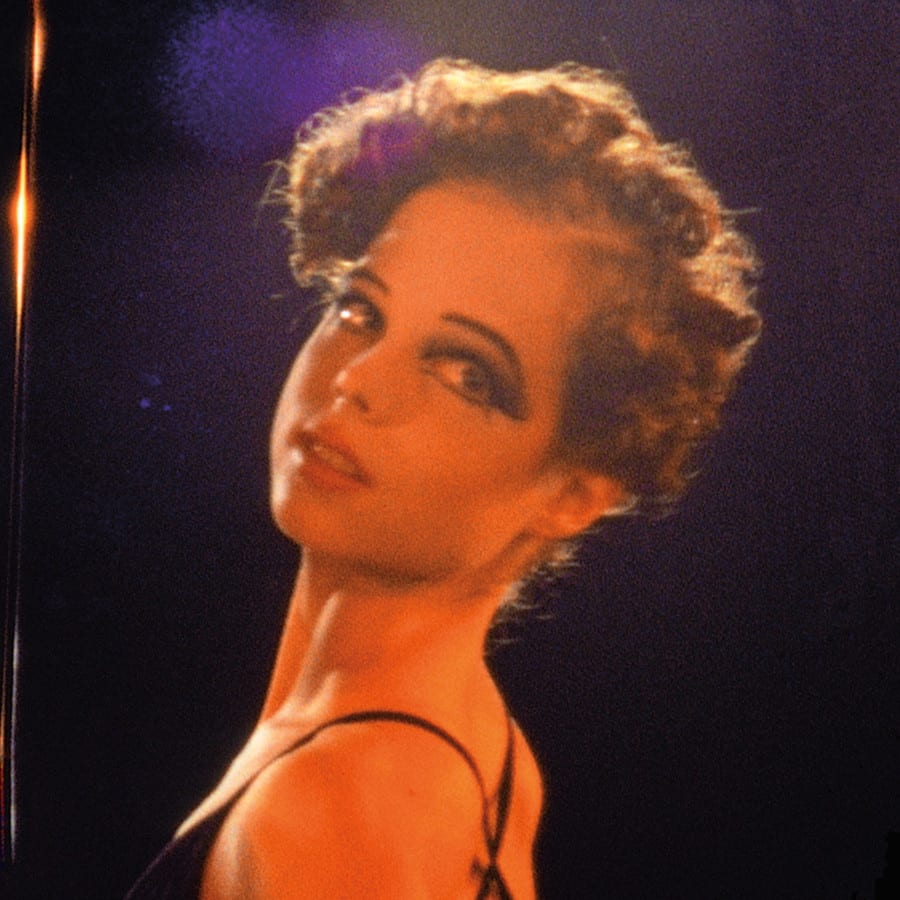
Delia Gonzalez is probably best known in dance-music circles for her work alongside Gavin Russom in the first decade of the ’00s, producing leftfield house and ambient music for DFA Records. Since then she has focused her efforts on commissions that straddle the worlds of club music and fine art. In Remembrance, Gonzalez’s first album as a solo artist, arrives as the culmination of her foremost project in the last half-decade: a quarto of solo piano compositions that were written to soundtrack four 16mm ballet films first exhibited at the Galleria Fonti in Naples in 2010 and subsequently at exhibitions in Cologne and New York. Accompanying these piano pieces are four techno reworkings courtesy of up-and-coming producer Bryce Hackford.
“Haunting” feels like an obvious adjective to reach for when describing Gonzalez’s music, yet from the first few bars of the opening track it is difficult to arrive at a more apt word. A sparse and relatively simplistic melodic refrain loops over and over, the soft thud of the hammers audible in the brief spaces between the notes, eventually being joined by an accompanying high-key refrain that heightens the beguiling sorrowfulness of the sound. The track seems to work through a juxtaposition of lightness and heaviness, an aesthetic that becomes further pronounced in ‘II‘ where flitting high keys accompany a sustained low-key refrain, the notes working in contradistinction to one another, not quite synchronising but building to intense crescendos. The result is as hypnotic as it is unnerving to listen to.
Unlike other noted cross-over pianists, such as Nils Frahm or Jon Hopkins, Gonzalez doesn’t offer airy or spacious compositions; rather there is a subtle forcefulness to her music that is arguably more provocative and incendiary than either of the aforementioned artists. In the falling notes of ‘III‘ which seem to tumble down the scales before being picking themselves up again and starting all over, or in the ebbing tempo that dictates the urgent pace of ‘IV‘, where everything seems on the point of disintegration, there is none of the easy-going ambience often associated with modern classical. Instead, as the tracks expand outwards and become gradually more layered, they make demands of the listener’s emotions. Yet, whilst in words this might make Gonzalez’ music sound stuffy or difficult, bound up with the pretensions of avante-garde fine art, then the listening experience could not be more different. The four pieces here are immersive, unpretentious and imbued with a raw honesty that makes it instantly accessible.
The 12″ version comes with a DVD of the four ballet shorts, allowing you to enjoy the music with the visuals as originally intended. What’s more, this is no throw-away bonus disk. The performance from the two ballet dancers makes explicit the themes of mania and ecstasy at work in the record. Gonzalez has said that the music expresses how she feels about the creative act itself and in the perpetual turning and twisting bodies of the dancers, as well as the pained facial expressions that the camera occasionally closes in on, the films draw out the themes of mania and ecstasy that underpin the album’s schema.
It might seem a bit odd to combine four ballet pieces and four techno tracks, but not only does it work wonderfully but in fact there is not even an insinuation of disjuncture between the two halves. This is partly thanks to the fact that Gonzalez’ way of writing for the piano remains indebted in many respects to the sound design of electronic music. It’s also partly because Hackford’s first ‘Remix I‘ is an ambient affair in which the key swirl slowly in a warm wash of reverb and soft electronics, easing the listener into the more raucous second half of the album. ‘Remix II‘ steps things up, introducing an elastic kick drum that transforms Gonzalez’ melody into a slice of deep sci-fi techno. But it’s the final two remixes where Hackford’s talents really shine. ‘Remix III‘ is thirteen-minutes of muscular leftfield techno in which shimmering keys entwine with stuttering kicks, punctuated by an angular bassline. ‘Remix IV‘ follows suit, drawing the album to an impressive close with stringy chords and dusty pads.
Hackfords’ techno remixes not only work to give Gonzalez’ album a curveball second half, injecting it with a steroid shot of 4 / 4 beats, but further draw out the melodic themes of melancholia and ecstasy that colour her melodies. It feels like a bit of a cliché to suggest that there is something here for both the night out and the morning after, but in the sense that the two sides have both been specifically designed with public spaces in mind (the first half for a museum, the second half for a club) it is perhaps not as puerile as first seems. This is music that is as much made for established contexts, as much as to confound them. As such, this is a record that slots into the exciting things happening in the fields of modern classical and analogue techno, and yet simultaneously stands on its own in that it sounds like absolutely nothing else that has been released this year. Perhaps this is why, most of all, In Remembrance is a record in which the word “haunting” comes to mind time and again. And which is all the better for it.
In Remembrance is out now on DFA Records, order a pink vinyl copy from their web-store.
TRACKLIST
A1. Delia Gonzalez – I
A2. Delia Gonzalez – II
B1. Delia Gonzalez – III
B2. Delia Gonzalez – IV
C1. Bryce Hackford – I Remix
C2. Bryce Hackford – II Remix
D1. Bryce Hackford – III Remix
D2. Bryce Hackford – IV Remix
> STREAM BRYCE HACKFORD REMIXES ON SOUNDCLOUD
Discover more about Delia Gonzalez and DFA Records on Inverted Audio.